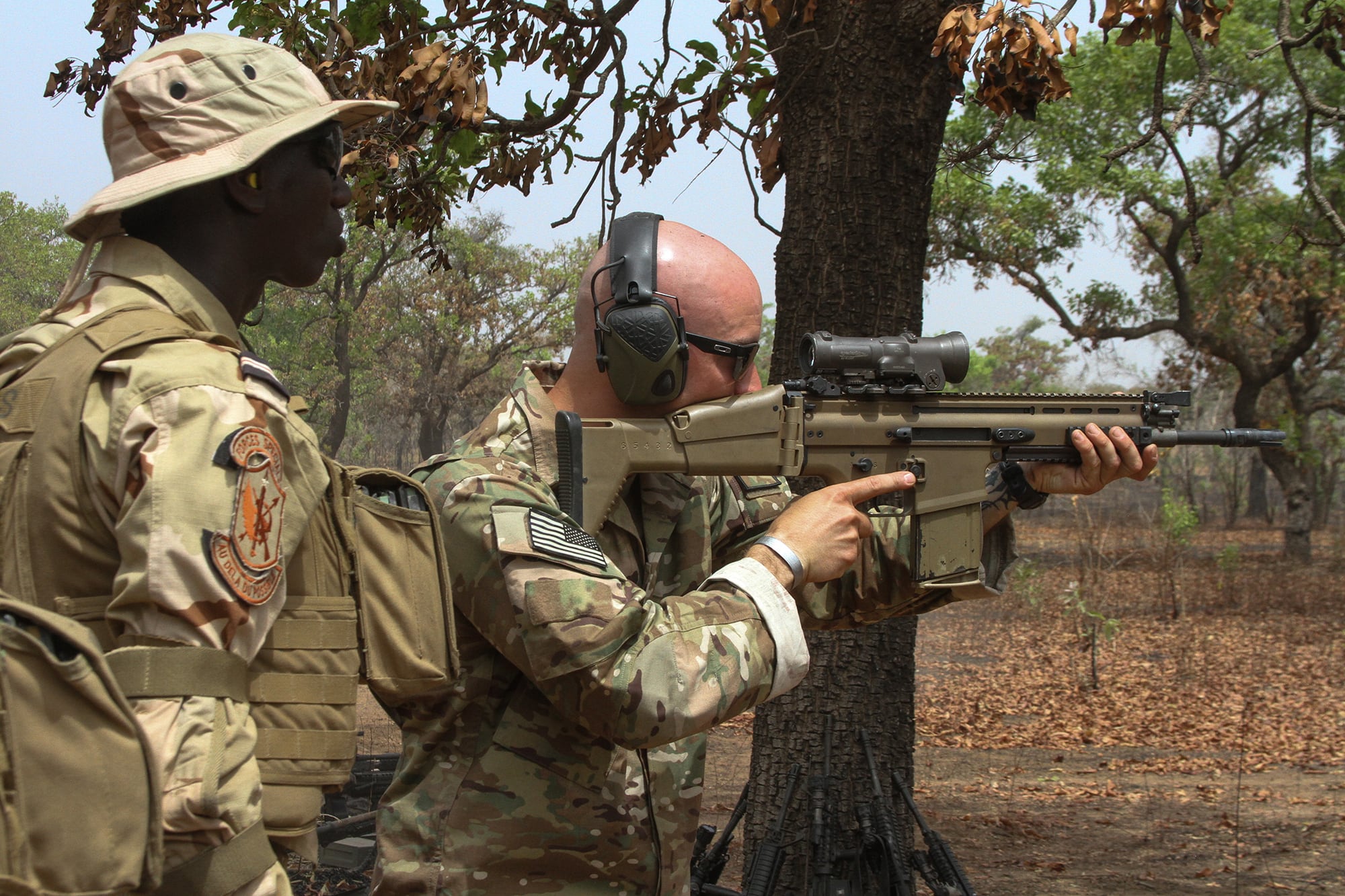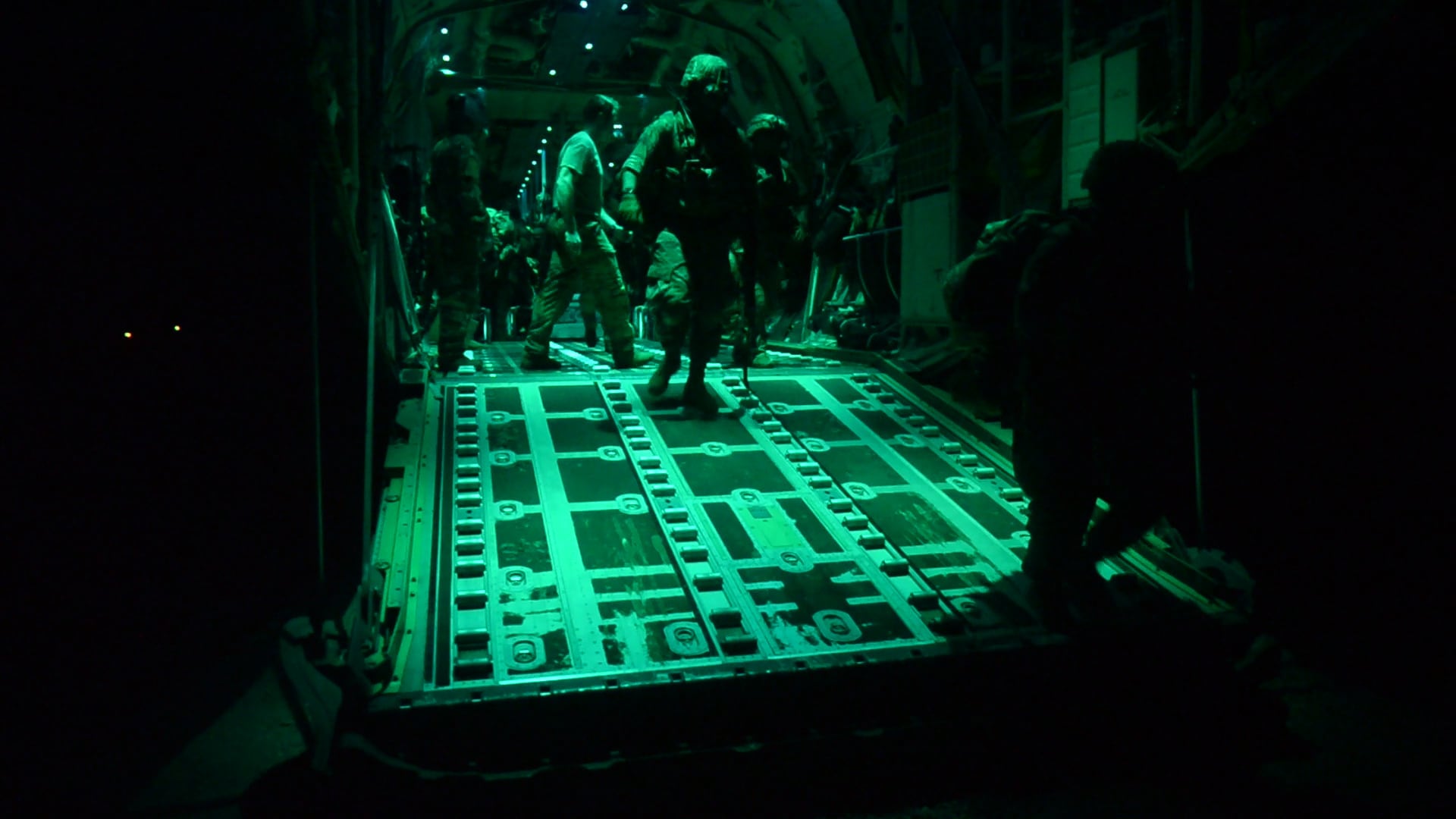U.S. Africa Command isn’t expecting its mission to build up Somalia’s Danab Advance Infantry Brigade to end anytime soon.
As the Pentagon weighs adjusting troop presence in Africa and elsewhere, AFRICOM is predicting it will continue to develop the so-called “Lightning Brigade” until 2027 — approximately a decade after the U.S. Special Operations forces first got involved training the specialized infantry to combat al-Qaida offshoot al-Shabab, who has between 5,000 to 7,000 militants in Somalia.
“The Danab is a capable force, especially there in Somalia,” AFRICOM’s deputy director of operations Army Brig. Gen. Miguel Castellanos told Military Times. “I think our engagement on a day-to-day basis with the Danab soldiers is very helpful for them to get the experience and see the professionalism of our forces."
RELATED

Since the Danab was first formed in 2013, the force has expanded from approximately 150 personnel to between 800 to 1,000 troops. Ultimately, Castellanos said the goal is build up a force of 3,000 Danab troops.
Before working with U.S. military advisers, those training to become Danab forces first work with Bancroft Global Development, a nonprofit organization who works with the State Department to recruit and train Danab forces, a State Department official in the region told Military Times in 2019.
The personnel are then handed over to U.S. military advisers for additional training in advanced warfighting techniques, among other things. AFRICOM did not disclose which military units are in Somalia training the Danab, citing force protection considerations.
After years of training with U.S. troops, the Danab forces now are conducting most missions on their own, according to Castellanos.
“That training is going well...I would say most of the time they are able to go out on their own and perform missions on their own,” Castellanos said. “It’s becoming more and more common that they’re doing this.”
Castellanos credited the Danab forces’ improvement to experience. Likewise, he said U.S. troops who rotate in and out of Somalia have often served in Somalia previously and are therefore familiar with the Danab troops.
Meanwhile, recruitment of new Danab forces has slowed in recent months — an outcome Castellanos attributed to difficulties the Federal Government of Somalia has had finding “appropriate soldiers.”
The federal government also has a tendency to become sidetracked when not focusing on establishing security or combating al-Shabaab, he said.
“I think part of it’s just been that slow building for the government to provide soldiers,” Castellanos said.
For some experts, this is cause for concern — particularly given that Somalia is poised to take over security responsibilities from the peacekeeping African Union Mission in Somalia forces by 2021.
According to Katherine Zimmerman, a resident fellow at the American Enterprise Institute and an adviser to AEI’s Critical Threat Projects, there are some uncertainties after this turnover happens.
“I think the real concerns that I have are going to be whether this force continues to build...if you’re looking at the timeline that we’re operating on, there’s the looming 2021 deadline with the AMISOM forces and kind of this big question of what comes next after that," Zimmerman told Military Times.
The AMISOM mission is backed by the United Nations and was first launched in 2007 to enhance stability in Somalia.
Paul Williams, a professor of international affairs at George Washington University, doesn’t believe the Danab and the rest of the Somali National Army will be adequately prepared by 2021 to counter the threat of al-Shabab and provide stability for Somalia as nearly 20,000 AMISOM forces scale back their mission.
Although the Danab units remain the “most effective” in the Somali National Army, Williams said they don’t have the capacity to “do everything” and advised Somalia politicians against diverting Danab forces from missions they’ve been trained to do, such as offensive operations.
“Somali politicians must guard against the desire to break up the units or use them for missions they are not trained to conduct, including holding operations," Williams said.
Historically, experts have voiced similar skepticism regarding the Danab’s ability to independently counter al-Shabab.
For example, EJ Hogendoorn, then-deputy program director for the International Crisis Group’s Africa program, told lawmakers on the Senate Foreign Relations Committee in March 2018 that Danab forces were “not enough to take on al-Shabab” and provide stability in Somalia.
Likewise, he said that the Somali National Army was “poorly coordinated” and that it’s ability to operate was crippled due to “massive corruption.”
RELATED

AFRICOM nevertheless remains optimistic, and Castellanos said the maturing of Danab troops in recent years has rendered “positive” effects for the Somali National Army, who look up to the elite forces. Specific areas where the Somali National Army has improved include the ability to better keep terrain from al-Shabab, he said.
Once the Danab forces reach 3,000 troops, it’s uncertain what that would mean for the U.S. training mission and whether the Danab forces would be entirely self-sufficient. But Castellanos signaled that some U.S. involvement was likely and would prove beneficial in the future.
“I think it’s going to probably depend on the circumstances,” Castellanos said. “I think right now, based on the last year, I would say that if we continue to have episodic engagements with the forces, I think that’s probably going to be helpful just to maintain their level of ability and capability.”
Additionally, as Danab troops retire or exit the service, Castellanos stressed the value of some U.S. engagement to train new crops of troops who join the Danab forces.
“I think we’re always going to have that little presence there where we’re able to...retrain, and reexamine, reassess the capabilities of those teams,” Castellanos said.
In addition to training Danab forces, the U.S. has also stepped in to conduct airstrikes against al-Shabab in Somalia. Strikes have ramped up under the Trump administration and AFRICOM conducted a record number of 63 strikes in 2019 in Somalia.
So far, the command has conducted 26 air strikes in 2020 — a pace that “lightly exceeds” that of 2019, according to AFRICOM spokeswoman Navy Lt. Christina Gibson.
Across the entire African continent, the Department of Defense has approximately 6,000 personnel. There are between 650 to 800 U.S. troops in Somalia at any given time.
Those troops are essential in Somalia to quash the threat of al-Shabab — particularly to the U.S., according to Castellanos. However, the U.S.'s current footprint could change, given the Pentagon’s review of all the combatant commands as the Pentagon directs attention to Russia and China.
While AFRICOM has said that al-Shabab has a desire to attack the U.S. homeland, the command does not believe that the al-Qaida offshoot has the capacity to do so.
“Al-Shabab is a disease to the people of Somalia and the broader international community,” AFRICOM spokesman Air Force Col. Chris Karns told Military Times. “The ounce of prevention we provide to this international effort strengthens our partnership and helps disrupt al-Shabab’s vision, desire and appetite for destruction.”




